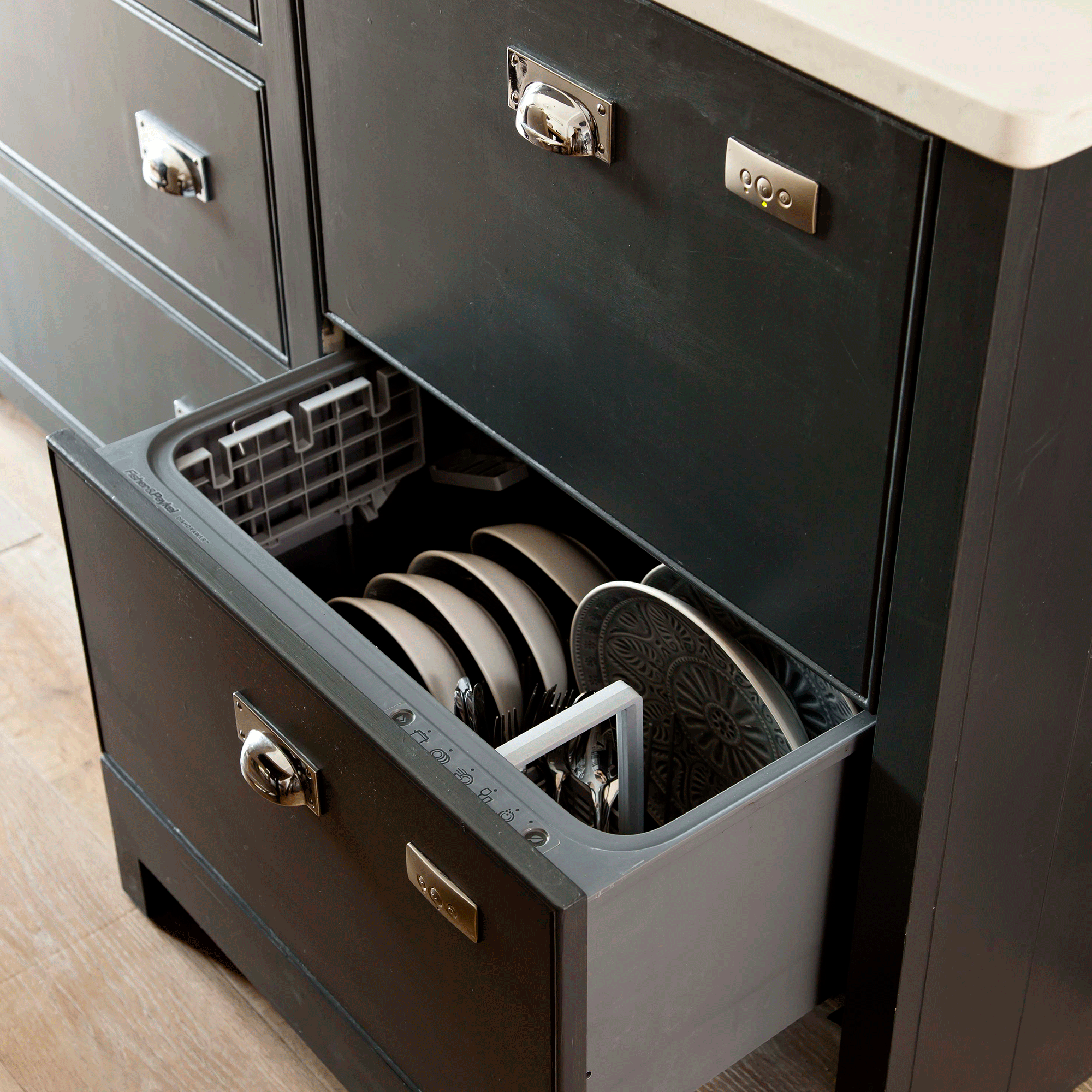How much does it cost to run a dishwasher? And how can you save?
Are you wondering how much it costs to run a dishwasher? We've worked it out and have found ways to cut your spend


This article has been updated to show the running costs based on the January 2025 Energy Price Cap. It has also been fact-checked and any out-of-date information removed.
Few of us would want to be without a dishwasher – a modern marvel that saves us from the dreaded chore of scrubbing dishes by hand. But as we look at ways to save energy at home, it might bring into question the cost to run a dishwasher, and whether it's worth it to save ourselves from slaving over a sud-filled sink.
If you own a smart meter, you might be aware that the latest models aren’t the water-guzzling appliances they used to be. So exactly how much energy does a dishwasher use? According to the Energy Saving Trust’s At Home With Water report, hand-washing dishes accounts for around 4% of the average household’s water use, while a dishwasher is only 1%.
Using the latest Energy Price Cap figures from Ofgem, we'll break down what it costs to run the average appliance – and show you how to work it out for your own dishwasher.
How much does it cost to run a dishwasher?

Will using a dishwasher cause your utility bills to increase dramatically? We’ve worked out how much does it cost to run a dishwasher based on the January 2025 price cap figures – as well as tips to reduce your energy usage.
We have used the 24.86p per kWh price cap figure to calculate how much it could cost to run a dishwasher. However, for a more accurate figure, you would need to see your energy bill to find out how much you pay per pence/kWh.
The main factors that affect how much energy does a dishwasher use are its efficiency rating (machines are rated A-G for energy), and wash length and temperature.
- An example B-rated 14-place full-sized dishwasher with an average annual energy consumption of 214 kWh would cost £53.20 a year to run.
- Whereas an example F-rated 14-place full-sized dishwasher with an average annual energy consumption of 266 kWh would cost £66.13 to run per year.
Bear in mind that energy labels are usually based on the eco programme, meaning that auto or standard programmes may be more expensive to run.
Sign up to our newsletter for style inspiration, real homes, project and garden advice and shopping know-how
Are some dishwashers cheaper to run than others?

If you're looking for ways to save energy at home, these clever dishwasher features will come in handy:
Dishwashers are available as full-sized models for a 60cm-wide space or slimline, which fits a 45cm gap. Which size you choose will have an impact on how much does it cost to run a dishwasher. For example, slimline dishwashers tend to be lower rated for energy efficiency – typically D-F are available – but if they’re being used at the same frequency, they can be more cost-effective than washing half-loads in a full-sized model.
An example D-rated slimline 10-place dishwasher could have average annual running costs of 211 kWh, meaning that it’ll only cost £52.45 to run over a year.
Over the lifetime of a dishwasher, the energy savings can be significant.
What energy saving features should I look for when buying a dishwasher?
When buying a new machine, look for the best dishwasher for you, in terms of size, style and, of course, energy saving features.

1. Air drying
Rather than use heated air to dry dishes, this feature opens the dishwasher door so the contents can dry naturally. ‘Hotpoint ActiveDry technology automatically opens the door by up to 10cm at the end of the cycle,’ explains Kimberley Garner, Brand Manager, Hotpoint. ‘This not only offers up to 99 per cent better drying results on integrated models, but also reduces energy consumption by up to 22 per cent.
2. Eco programme
Most dishwashers feature an eco setting. This is a longer, low-temperature wash cycle that uses time rather than high water temperatures to get your crockery clean.
Plus, as dishes are soapy for longer, the detergent has more time to work, decreasing the amount of effort, and energy, that your dishwasher has to put in. Which? estimates that eco programmes save around 20-40% less energy and water.
3. Auto programme
If you’re not sure what programme to choose, the auto setting takes away the guesswork. It uses sensors to detect how dirty your dishes are, choosing the optimal temperature and amount of water for that particular load. This saves energy if you tend to choose an intensive 60C when your crockery only needs 40C, for example.
How can I cut the cost of running a dishwasher?
1. Fill it up
Wait until your dishwasher is full before you run a cycle. A half-empty appliance uses a similar amount of energy to clean fewer dishes. If you really need to run it, look for features that allow you to wash a half load more efficiently.
‘Hotpoint’s 3D Zone Wash technology makes sure the right amount of water is used throughout the selected basket for 40% more energy efficiency for smaller loads,’ says Kimberley from Hotpoint.
2. Load like a pro
Rewashing dishes is a waste of energy. While overloading can cause this, often, water from the spray arms may not be able to reach dishes because they’re not in the right place.
Make sure that large items sit at the back and sides, with pans at the bottom so they get an intensive clean. Use supports for plastic containers so they don’t flip over (or lean a heavier item against them) and mix up cutlery in the basket so that spoons and forks don’t ‘nest’.
3. Wash your dishwasher
Learning how to clean a dishwasher will keep it as efficient one as possible, so keep it as sparkling as your sink. Pop in a dishwasher cleaning tablet or solution on a monthly basis to whisk away food debris and limescale.

Rachel Ogden is a freelance journalist with more than 20 years’ experience of writing, editing and sub-editing. Since 2007, she's worked exclusively in interiors, writing about everything from extending your home to kitchen worktops, flooring, storage and more. She specialises in product reviews, having reviews hundreds of small and large appliances and homeware.